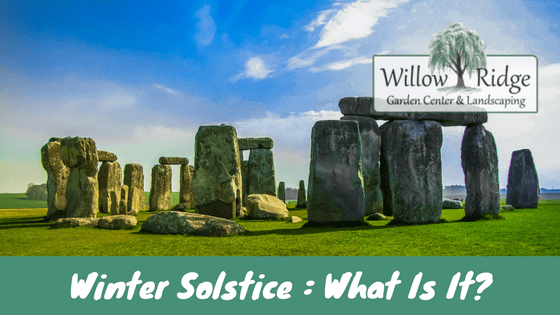Winter Solstice: what is it?
The Winter Solstice marks the shortest day of the year in the northern hemisphere. The date this year is December 21st, when the sun appears at its most southerly position. Because the earth is tilted, we experience seasons. As the Earth moves around the sun, each hemisphere experiences Winter when it is tilted away from the sun. Summer is when the Earth is tilted toward the sun.
For six months now, the days have grown shorter and the nights have grown longer. On Dec. 21, the shortest day of the year, many cultures will celebrate a holiday. Christmas, Hanukkah, Kwanza, or pagan festivals all coincide with the return of the sun and longer days to come. Stonehenge, the assemblage of giant rocks in Wiltshire, England which was built in 3000BC, is famous for its solstice celebrations. This prehistoric monument is aligned on a sight-line pointing to sunset on the Winter Solstice. Thousands of people still gather at the site to celebrate the rebirth of the sun by playing drums and trumpets. In china, the Winter Solstice is considered as important as Lunar New Year. People celebrate by making food symbolizing harmoniousness and reunion. As you can see, people all over the world celebrate this change of season with festivals, feasting, dancing, singing, and with fire.
Gardening and The Summer Solstice
As gardeners we celebrate because we feel we’ve turned the corner and are heading towards Spring. We will be gaining 1 minute of daylight each day and this helps mentally as we dream/plan our next gardening season. In three short months it will be spring and there is plenty to do.
- Pour over the annual seed catalogs which promise new and better things to grow.
- You may also clean and sharpen garden tools, edge and remulch garden beds, or pile leaf mold on the veggie garden plot.
- You may just take a break from the hustle and bustle.
Go outside into the quiet night, light a fire in the fire pit, and celebrate that you’re still here to enjoy another season.

